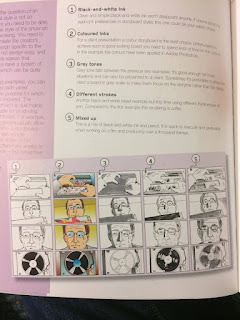I borrowed some books from the library about storyboarding and composition since I really want to improve my skills. These two books I found super useful, they explain things in great details and demonstrate with illustrations.
Master Shots by Christopher Kenworthy
100 Advanced camera techniques to get an expensive look on your low budget movie
Inside the book, it has a movie shot as the reference and 3D model showing where the light and camera is and the actual effect on the screen. What is more amazing is that the writer use moods as each chapter's title and describing why each camera angle is suitable for the mood and emotion. I especially look at chasing scenes and tension. I learnt that hand hold method could create an intense mood and making audience believe that they are part of the story. Also lighting is very important. I am going to put a lot of effort in environmental design to create the perfect atmosphere for each scene.
Another extremely useful book is The storyboard Design Course by Giuseppe Cristian
The ultimate guide for artists, directors, producers and scriptwriters.
This book explains a lot of basic knowledge about producing a film that I did not know. For example the drawing style of the board will alter the result of the film. If I am working in a big team, the storyboard is also a concept art that I always neglect the power of it. It is true when I tried to make the storyboard looks like the final outcome, it allows me to draw the scenes more accurately and precisely than just using the storyboard as a reference of the camera angle like what I did for the last two years.

It also shows a lot of examples of transition shots, like similar cut, where a scene showing an object in one place and jump to another similar object in another place; or clips in between clips; straight cut and zooms etc. All these interesting transitions I have never thought about. I become really interested in considering camera angles so hope some of these new stuffs I learnt could be applied in my storyboard.
Composition, considering light and camera movement










No comments:
Post a Comment